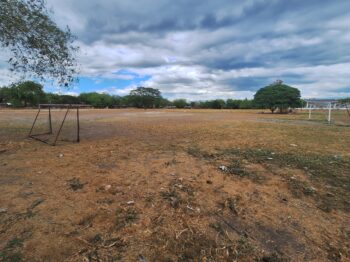CAGAYAN DE ORO CITY (MindaNews/27 December) – Zero death as Cagayan de Oro City suffered its 3rd 100-year cycle flood in six years is something to reckon with.
Floods are natural occurrences. Like other calamities, it is a natural hazard, beyond human control, also referred in legal contracts as ‘act of God.’ Human activities, however, either aggravate or mitigate the impact of natural calamities.
That is why it is understandable that people ask why calamities like the flood induced by severe tropical storm “Vinta” last Dec. 22, happen. These events point to certain human activities like logging, mining, urban planning and solid waste management, among others.
Disaster impact mitigation is the primary objective of disaster risk reduction. And when disaster strikes, the hierarchy of impact mitigation follows the law, like the Bill of Rights in the Constitution which starts with the primacy of life, property and liberty — in that order.
When Code Red is declared, like the City Hall did at 8:30 a.m. last Dec. 22, government may implement forced evacuation, which in effects stays the right to liberty of people in danger zones. But in doing so, government is exercising the protection of the highest right — the right to life. In disaster response, the priority is to save life first, before saving property.
In this regard, the city government of Cagayan de Oro and the various public and private rescue groups came up with high marks with the zero death in the Vinta flood.
As one observed, despite having the highest hazard exposure along the path of Vinta, Cagayan de Oro was not highlighted prominently in the news, which focused on body count. The city has highest hazard exposure as it has the highest population density and most built-up zones along the typhoon’s path.
In disaster risk reduction planning, impact is measured by the presence of natural risk. Low-lying areas along bodies of water have higher flooding risk compared to higher elevated planes. Putting people and communities in a flood high-risk area exposes them and their properties to higher flood hazard.
Now the hard question: Have we learned the lessons of Sendong?
My answer is YES and that is substantiated by the zero death in the Vinta flood. Not that the flood was not destructive and deadly, as it in fact left a swath of death, with reports ranging from 160-200 deaths and scores still missing along its path.
The difference? The city now has a functioning disaster risk reduction system and has built resilience as a governance agenda.
But there are still many things that need to be worked on. Construction of flood control infrastructure takes time to build. And these big infrastructure projects are administered by the national government. The P8-billion, 12-kilometer mega dike is still unfinished. There are still alignment and right-of-way issues along the stretch of the dike, which explains the gaps that served as “open” floodgates as waters from Mt. Kitanglad, Mt. Kalatungan and the plateaus of Bukidnon rampaged down Northern Mindanao’s metropolis.
Also, the improvement and building of new drainage infrastructure in the city are still underway. In both the river flood control and drainage projects, funds from the national government come in trickles as continuing annual funds. Maybe these will be completed in three to five years.
There were efforts to address flood control issues up the 135,000-hectare Cagayan de Oro watershed, around 80 percent of which is in Bukidnon. Project Payment for Environmental Services which sought to reforest the CDO watershed has not really taken off, with LGUs where the watersheds are located not acting on it. The exception is the Cagayan de Oro local government and the ongoing PES initiative of Xavier University in Miarayon, Talakag, Bukidnon.
In Cagayan de Oro, the City Local Environment and Natural Resources Office has been relentless in stopping illegal logging in the part of it watershed that is within the city’s jurisdiction, in the Monigue subwatershed. Reforestation projects through the National Greening Program are also underway.
Last February, we made an aerial surveillance in the city’s watershed and we found fresh logging scars especially in the Mt. Kalatungan areas — in the Bulanog subwatershed in the mountains of Talakag, Bukidnon. Banana plantations have also made fresh incursions in the natural forest lines.
Then, there is social infrastructure post-Sendong which is a work in progress.
Relocation and settlement development also take time. Yes, there is no doubt people in the no-build zones need to be relocated. Of the over 15,000 displaced by Sendong and those living in danger zones, around 3,000 still have to be relocated. This means 80 percent have been relocated in six years.
The administration of Mayor Oscar Moreno has created the City Housing and Urban Development Department (CHUDD) last year to rationalize and fast-track the city’s housing and settlement programs. And so far, they have done their best, I should say. The mayor in the inaugural of his second term said he would address the housing and settlement shortage. At the rate things are going, the balance of 20 percent could be done before 2019.
If civil infrastructure needs around 10 years to complete, natural methods may take more time as trees grow slower than concrete. Social reconstruction like housing and settlement also need more time and it is more complicated to deal with people than raw materials.
The abovementioned however are manageable governance issues. And indubitably things are being done and are moving.
The dire problem we are facing is FREQUENCY and SEVERITY of floodings. Climate change characterized by more frequent and severe storms is REAL.
The Sendong flood was considered a 100-year cycle flood as it was comparable to the flood that hit the city in 1916. It was followed by another flood of similar magnitude in 2012 when super typhoon Pablo whizzed past the city. And then Vinta on Dec. 22, 2017.
At our rate of recovery after Sendong, aggravated by Pablo and Vinta, we should be doing well.
In developed New Orleans of the US of A, it took them 10 years to conclude they have been rehabilitated after flattened by hurricane Katrina.
“One Sendong is Enough” has not been swept by the floodwaters.
Three 100-year cycle floods in six years is indeed very harsh. In a game of probability, it is no-brainer, we are not getting any upper hand.
But we are a resilient people. Cagayanons should never doubt that. (The writer is a former journalist. He is an environment advocate and currently works as a consultant of the City Government of Cagayan de Oro.)







